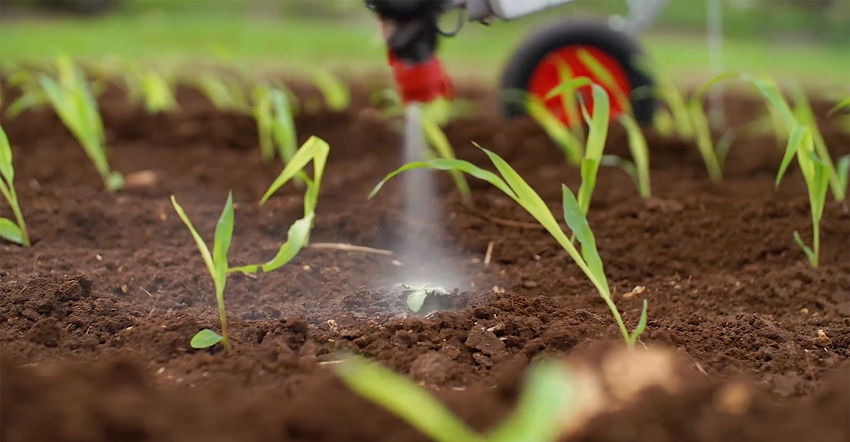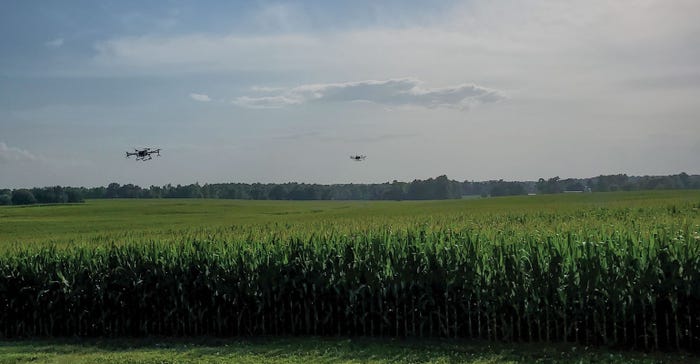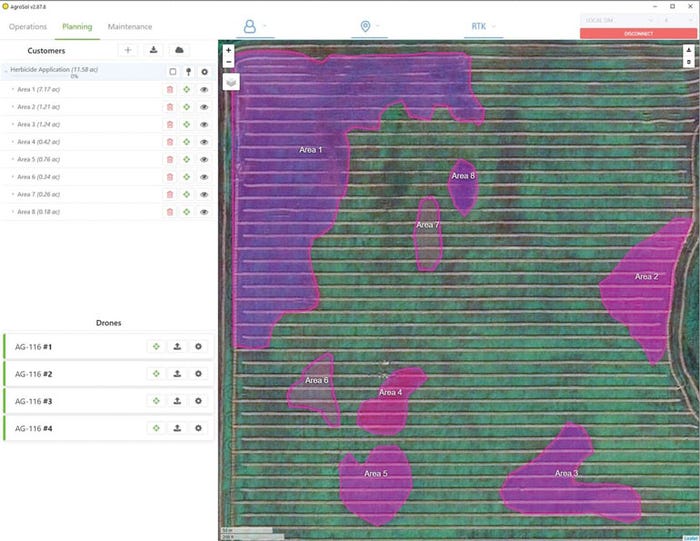
Drones zip across your field, spot-spraying weeds as they go. An artificial intelligence algorithm detects weeds and activates individual nozzles on spray booms only when they pass over specific weeds.
Once upon a time, these concepts would have felt futuristic. But they’re now a reality, and none too soon as crop input costs skyrocket and weed resistance threatens conventional methods.
Until now, the general assumption has been that drones carrying a payload of crop chemicals would be most popular for high-value crops such as orchards, vineyards or vegetables.
“We envisioned our business would center around specialty crops,” says Arthur Erickson, CEO of Texas-based drone manufacturer Hylio. “But we quickly found that what the market really wants is to use three or four of our drones at a time to spray larger row crop fields.”

So far, Hylio’s top customer base is custom applicators, followed by large-acreage farmers who want to replace current aerial spray applications via helicopter or plane.
“The farmer who is most interested in our products typically has around 5,000 acres [or more] and a team dedicated to crop protection,” Erickson says.
Hylio manufactures drones that can carry payloads varying between 2.7 and 5.2 gallons. “Efficiency depends on the dosage,” Erickson notes, but he says each drone can typically cover between 15 and 35 acres per hour.
Aside from the hardware, Hylio has developed in-house software that lets users build out prescriptions and run automated missions.
“There is an option for a manual flight mode, but the automated mode takes out a lot of human error,” Erickson says. “Most of our customers are farmers, not pilots or engineers.”

More applications
Users want to learn how to use different products across different crops. Some are even using the payload to seed cover crops.
“People use drones for a variety of reasons — they’re basically flying sprayer booms,” Erickson says. “The most common question is how a customer can get it to work for a very specific application on their operation.”
Erickson hopes Hylio can manufacture an additional 300 to 400 drones by year-end at its factory in Richmond, Texas. He’s also looking into what he refers to as more “Jetsons style” AI functionality, along with the ability to automatically swap out batteries and payloads to minimize downtime.
Based in Israel but launching in the United States early this year, Greeneye Technology is refitting existing sprayers with a kit that features cameras and AI technology that activates individual nozzles to spot-spray weeds as the sprayer moves through the field.
Greeneye CEO Nadav Bocher says that beyond the obvious value of reducing spray volume — from 60% to as much as 90% in some instances — the technology collects data that will help users make better decisions on future applications, after learning the exact mix of weeds in a given field. The technology can detect and spray weeds among crops with nearly 96% accuracy.
“Reducing herbicide volume means farmers can afford to invest in more efficacious formulations, which is especially important when tackling herbicide resistance. But our system can do so much more than that,” Bocher says. “Our AI capabilities enable us to provide farmers with an enormous amount of information about their fields. And as we collect more data, their weed control strategies get even more sophisticated.”
So far, Greeneye has assembled a data set of over 5 million images of various weeds to help the company detect and classify weed species. After each pass through a field, dashboard reports show the types, location and sizes of weeds that were detected, and can flag early signs of disease. Users also get a highly accurate stand count, which Bocher says is useful for making better yield estimates.
Greeneye has contracted with select corn and soybean farmers in the Midwest this year and plans to roll out availability in more states and for additional crops in 2023.
As-needed basis
Developing a more precise sprayer was an idea that was inevitable, especially as the specter of weed resistance continues to haunt millions of U.S. acres. That’s a big reason John Deere debuted its See & Spray Select technology in 2021, according to marketing manager Joel Basinger.
“Farmers can now utilize more expensive tankmixes and achieve a more effective weed kill at a lower cost than they could have in the past, thanks to the cost savings from only applying product onto targeted weeds instead of spraying the entire field,” he says. “Research has shown that weeds sprayed with complex tankmixes with more than two modes of action are 83 times less likely to develop herbicide resistance.”
See & Spray can recognize bare ground versus weeds, and nozzles are triggered only when moving over weeds. Deere research suggests See & Spray offers a similar
“hit rate” to broadcast spraying while reducing herbicide use by 77%, on average. There’s a time-saving element as well — if you’re not using as much herbicide, you’re not stopping as much to refill the tank, after all.
See & Spray comes equipped on John Deere 400 and 600 Series sprayers, and users can switch between spot sprays and broadcast applications as needed.
Ultimately, farmers don’t want their backs up against the wall any more than they already are when it comes to weed resistance, Bocher concludes.
“Resistance keeps them up at night,” he says. “They’re running out of options.”
About the Author(s)
You May Also Like






